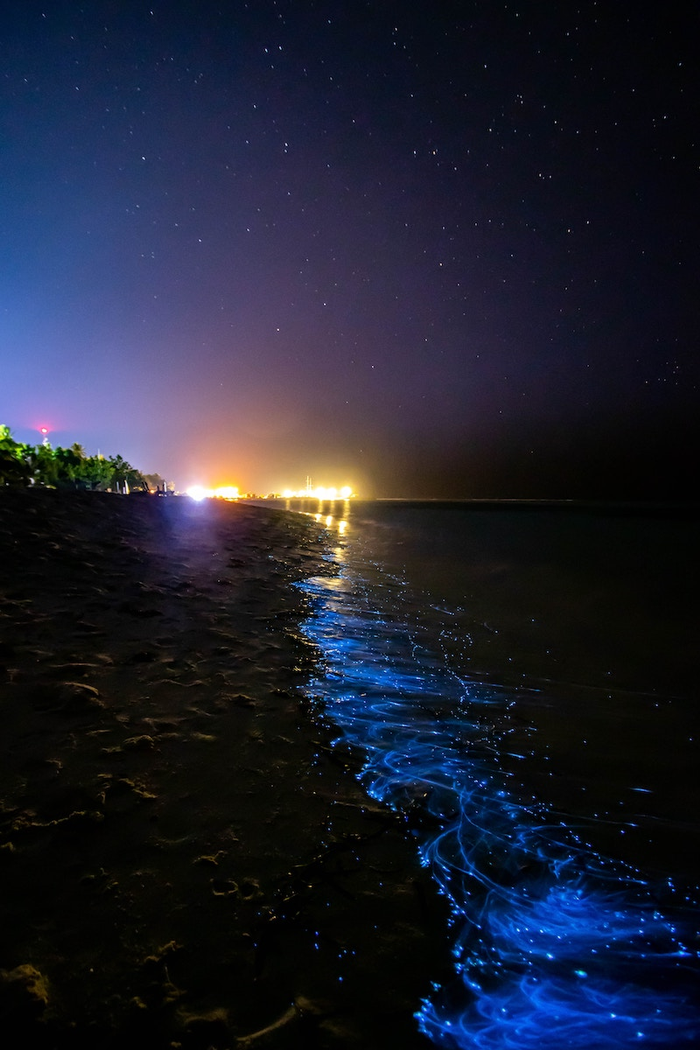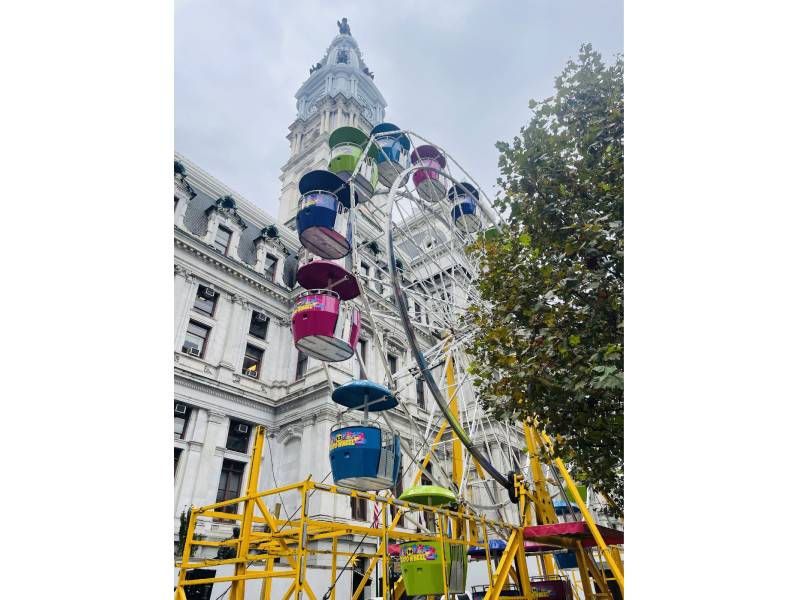Bioluminescence in Spiekeroog, Germany. Source: Wikimedia Commons
The enchanting allure of nature has continually captivated mankind for ages. Its ageless beauty continues to enrich us with an awe-inspiring experience. From the majestic mountain peaks to the roaring splash of a waterfall, the vibrant blossoming of a field of flowers, to aurora borealis that light up the Antarctic sky, nature has left humanity spellbound with its intricate splendor.
One such wonder of nature is the phenomenon of bioluminescence, the dazzling light that brightens up the beaches at night.
Bioluminescence is a natural form of light produced by living organisms such as bacteria, plankton, and other marine creatures. With the right settings, these beaches transform into glowing scenes, creating a fascinating world of beauty for anyone within the vicinity of the occurrence.
Many bioluminescent spots exist all around the world. Some notable ones are Mosquito Bay, Puerto Rico, Vaadhoo Island, Maldives, Toyama Bay, Japan, Matakatia Bay, New Zealand, Coles Bay, Tasmania, Matsu Island, Taiwan, Ha Long Bay, Vietnam, Koh Rong, Cambodia, Manasquan Beach, New Jersey, USA, Padangbai, Bali.

Bioluminescence in the Maldives. Photo by Hushaan @fromtinyisles on Unsplash
The famous Vaadhoo Island, located in the Maldives, is one place to enjoy a bioluminescent display on its beaches. Popularly referred to as the “Sea of Stars”, the Island is home to this captivating natural phenomenon.
At night, the water bursts forth with an otherworldly blue glow that looks like a scene from James Cameron’s fictional movie “Avatar”. Single-celled organisms called phytoplankton emit light when unsettled, thereby creating a bioluminescent glow. The ocean’s surface continues to illuminate the night sky as the waves continually crash upon the shore.
In Mosquito Bay, Puerto Rico, a large concentration of dinoflagellates (motile unicellular algae) emits a blue-green glow that lightens up the water giving it a dreamlike appearance. Also locally referred to as Bioluminescent Bay, this spectacular glow makes the location a wonderful place for Kayaking and Boat tours.
While bioluminescent beaches might offer spectacular views, the often tempting need for humans to dive into the depths and swim amongst the enchanting glow always comes with a measure of caution.
The light produced by these organisms in some cases comes with a measure of toxin that is harmful to humans. The light these organisms give out is a form of defense mechanism that is used to stun and scare away predators. Toxins from the bioluminescent dinoflagellate are toxic and poisonous to fishes that swim around them. They can also be harmful to human beings.
So when next you take a trip to any of the bioluminescent beaches you must seek advice from the locals before you take a plunge into the glowing depths.
Also, these bioluminescent displays are not a daily occurrence. Warm weather and calm waters with little pollution along with a high concentration of bioluminescent organism’s present are needed to experience the glowing display. It has also been noted that the months between June and October are viewed as the bioluminescent season.
Nature continues to present humanity with beautiful wonders through the bioluminescent beaches. The ethereal glow created by these organisms is one experience to add to one’s bucket list.

Okechukwu Nzeribe works with the Onitsha Chamber of Commerce, in Anambra State, Nigeria, and loves unveiling the richness of African cultures. nextquestservices@gmail.com





